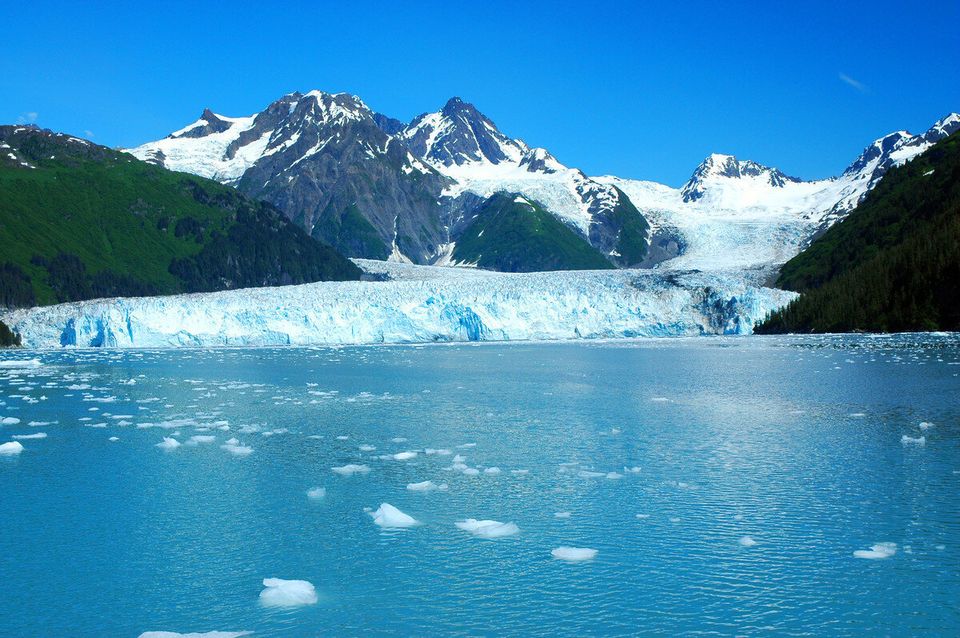Scientists believe that a plan to use a massive 'artificial volcano' to shoot billions of light-reflecting particles into the atmosphere, in an attempt to try and reverse global warming, might not be the greatest idea in the world.
The "geo-engineering" plan would have catastrophic consequences for the world, they have warned.
The idea is to spray millions of light-reflecting aerosol particles high into the atmosphere to reduce the amount of solar energy reaching the Earth's surface.
Big volcanic eruptions that blast sulphurous ash into the stratosphere have the same effect. The Mount Pinatubo eruption in the Philippines in 1991 led to a significant - though short-lived - dip in global temperatures.
But a new study has shown that such a last resort measure, conducted on a large scale, would lead to climate chaos and disrupt delicately balanced ecosystems.
One result could be a 30% reduction in tropical rainfall, the drying out of rainforests, and drought in parts of South America, Africa and Asia.
There is also the possibility of tension and conflict between different parts of the world, with northern European and some Asian countries benefiting at the expense of equatorial regions.
Strategies for artificially cooling the climate were seriously discussed by leading scientists in September when the Intergovernmental Panel on Climate Change (IPCC) met in Stockholm.
Dr Andrew Charlton-Perez, from the University of Reading, who co-led the new study published in the journal Environmental Research Letters, said: "We have shown that one of the leading candidates for geo-engineering could cause a new unintended side-effect over a large part of the planet.
"The risks from this kind of geo-engineering are huge. A reduction in tropical rainfall of 30% would, for example, quickly dry out Indonesia so much that even the wettest years after a man-made intervention would be equal to drought conditions now.
"The ecosystems of the tropics are among the most fragile on Earth. We would see changes happening so quickly that there would be little time for people to adapt.
"Discussion of geo-engineering often prompts heated debate, but very often there is a lack of understanding of what putting large amounts of aerosol in the stratosphere will do to the complex climate system. Our findings should help to fill in some of the gaps about one of the leading candidates."
The scientists pointed out that massive numbers of particles would have to be injected into the atmosphere to counter the effects of climate change. It would be the equivalent of five Mount Pinatubo-scale eruptions every year.
Computer simulations of what would happen as a result revealed massive disruption to rainfall patterns around the equator.
As well as reflecting radiation from the Sun back into space, the aerosols would absorb some of the heat energy emitted from the Earth's surface, the scientists found.
This would lead to warming of the stratosphere, making lower layers of the atmosphere more stable, weakening upward air currents and reducing rainfall.
Co-author Professor Ellie Highwood, also from the University of Reading, said:
"Climate scientists agree that cutting carbon emissions is still necessary to curb the damaging effects of future climate change. However, since such cuts are far from certain to materialise, proponents of geo-engineering research argue that whatever the world decides on its carbon emissions, it would be prudent to explore alternatives that might help us in the decades ahead.
"On the evidence of this research, stratospheric aerosol geo-engineering is not providing world leaders with any easy answers to the problem of climate change."
Other scientists said that the idea might still have legs - and that the warnings about the theorectical tech were too aggressive.
Dr Matt Watson, senior lecturer in natural hazards at the University of Bristol, criticised the scientists for basing their research on an extreme climate change scenario that assumed a quadrupling of carbon dioxide (CO2) greenhouse gas levels.
Such a scenario, requiring 100 million tonnes of sulphur dioxide particles to be pumped into the atmosphere per year, not surprisingly had "severe and uneven impacts".
Dr Watson said: "To state that solar radiation management (SRM) won't work based upon one extreme scenario smacks of hype rather than a serious discussion. I know of no serious scientist who would advocate introducing 100 megatonnes of sulphur dioxide in a four degree warmer world.
"This new research will doubtless be seized upon by those opposing geo-engineering research and rebutted by those that support it, in an unhelpful, adversarial tit-for-tat. A more realistic scenario might have been to try with two times CO2 or a specific IPCC projection, and possibly simply stabilise (rather than attempt to return to pre-industrial) temperatures. That would probably produce less dire predictions.
"It remains the case that our only guaranteed way forward is to reduce the record levels of greenhouse gases we continue to pump into the atmosphere. It's vital that scientists continue researching geo-engineering; but no government serious about climate change should see it as a quick fix."
